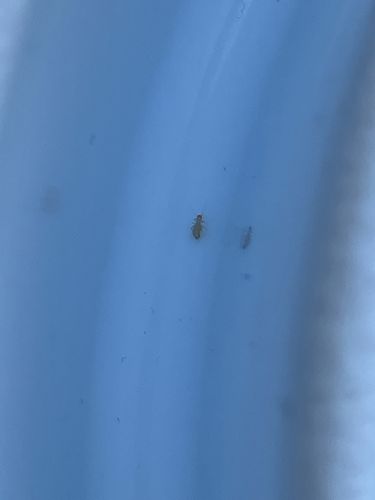Booklouse
Scientific Name: Psocids (various species)
Order & Family: Psocoptera (Booklice and Barklice)
Size: 1-2 mm

Natural Habitat
Indoor environments, especially in damp, warm conditions; feed on starches, molds, fungi, and insect fragments found in books, stored food, and other household goods. Outdoors, they can be found on bark, under leaves, and on fungi.
Diet & Feeding
Mainly feed on microscopic molds, fungi, starches from book bindings, wallpaper paste, cereal products, and other organic debris. They do not bite humans or animals.
Behavior Patterns
They are small, soft-bodied insects. Most species are wingless or have vestigial wings indoors, while outdoor species may have wings. They are not usually observed in large numbers unless conditions are favorable (high humidity, food source). They undergo simple metamorphosis (egg, nymph, adult).
Risks & Benefits
Generally harmless to humans; they do not transmit diseases. However, large infestations can contaminate stored food products and damage books or paper goods. In large numbers, they can be a nuisance. They are not known to have significant benefits in a household setting, but outdoor species can be part of the detritus food chain.
Identified on: 9/14/2025